What DEI Metrics are you using to measure the impact of your strategic actions?
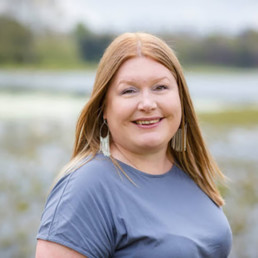
Written by Hannah Wilson
Founder of Diverse Educators
We are data rich when it comes to the students in our schools, but we are data poor when it comes to our staff.
Any organisation leaning into a DEI strategy and action plan needs to consider the data that they have, and the data that they need to have, to inform the why, the how and the what of their approach.
I find that the CQ framework helps us to think about the cyclical steps we need to take to gather, interpret and act on our DEI data:
- CQ Drive: Why do we need to gather DEI data? Are our intentions clearly being communicated?
- CQ Knowledge: What do we need to know about our workforce and workplace? How psychologically safe do employees feel?
- CQ Strategy: How will we gather meaningful data? How will this data be handled and shared?
- CQ Action: How will this data be used to inform our next steps? How will this data make our workplace more inclusive?
DEI Metrics in a school / trust thus need to include:
- Baseline data
- Benchmarking data
- Progress data
- Qualitative data
- Quantitative data
- Stakeholder engagement data
- Stakeholder feedback data
- Recruitment, retention and promotion data
- Salary data
We need to remember that this data is about human beings.I once heard a school leader say, we need to focus on the ‘names not the numbers’ in our data trackers in schools. Each piece of data is thus a story, a story about a person.
So this data needs to be handled with care. DEI data is asking people to share their identity, their lived experience and to disclose personal details. This can only happen in a culture of intentional trust and psychological safety.
Moreover, the data needs to be handled in an intersectional way. We need to look at trends within groups but also across groups, for example, pay progression for men v women, pay progression for white v black employees, pay progression for white men v white women v black men v black women.
Recruitment and retention data is a great place to start:
- Who are we attracting?
- Who are we longlisting?
- Who are we shortlisting?
- Who are we interviewing?
- Who are we recruiting?
- Who are we promoting?
- Who are we retaining?
- Who are we losing?
Some other questions for us to discuss before we create and send out a staff survey.
How do we measure diversity?
Conventional measurements rely on counting the number of people within an organisation who belong to each of the protected characteristic groups, as identified by them.
How do we gauge how people feel about the culture of their workplace?
Employee feedback is one of the most useful data sources for measuring inclusion, especially when leaders can use a “pulse,” a quick survey, to check in with employees without adding to distractions. The challenge, however, is in first establishing the right metrics and then asking the right questions.
How do we frame a DEI survey?
To create a DEI survey that captures employee attention and gets engagement, there are a number of factors to consider:
- Creating Inclusive Demographic Questions
- Making the DEI Survey Anonymous
- Making Questions Non-Required
- Being Forthcoming With Intent
- Using Expert Resources
What is a DEI dashboard?
A diversity, equity, and inclusion dashboard is an interface that provides companies with a visual representation of their current diversity, equity, and inclusion practices.
How do you create goals for DEI initiatives?
- Define goals using benchmarking data
- Measure outcomes, not just output
- Focus on retention, not just recruitment
- Review inclusion, not just diversity
- Use surveys to measure inclusion
How do you measure DEI effectiveness?
- Resources/ funds allocated to DEI strategy
- Number of diverse employees across the organisation
- Percentage of diverse employees in leadership positions
- Investment into development programmes for diverse employees
- Gap in pay between different demographic groups
- Length of time diverse employees stay with the organisation
- Feedback in exit interviews from diverse workforce
- Number of incident reports e.g. microaggressions
To help you think about the data you are, and could be, using we are hosting a series of free DEI Metrics webinars with some of our collaborative partners, so that you can find out more about their tools to help you measure DEI in your school/ trust.
3 teams, 3 platforms, 3 solutions:
- On Fri 21st October 12.00-1.00pm we will be joined by the Edurio team
- On Mon 7th November 12.00-1.00pm we will be joined by The GEC team
- On Thu 24th November 12.00-1.00pm we will be joined the Flair Impact team
Register to attend but also to receive a link to the recording of each session.
What is your school’s infrastructure for DEI?

Written by Hannah Wilson
Founder of Diverse Educators
I get asked a lot to work with schools to help them shape their DEI infrastructure. There is not a one-size fits all approach as it depends on the size of your school and staff/ student bodies. But a helpful way of thinking about it is to parallel it to the team structure you have for safeguarding – a named lead on SLT, a deputising team, an attached governor but an expectation that all staff are trained, vigilant and take collective responsibility.
As a former start-up headteacher, I apply the same concept to staffing DEI as I did to growing a school staff model year by year – map out what you want the long term staffing structure and stakeholder map to look like and use it as a shadow to capture what you have in place and set yourself targets by term, by year of how you will grow the team and distribute the leadership.
Some school-level roles to consider putting in place, over time to create the infrastructure to bring your DEI strategy to life:
DEI Strategic Lead (like a DSL)
This is the person who has DEI in their job title. Ideally they sit on the SLT so they can work with the strategic plans for the school.
DEI Operational Lead (like a DDSL)
This is the person who deputises for the DEI Strategic Lead. They often sit in the MLT and are part of the curriculum and/ or pastoral team. They might have a specific remit or share the responsibility and co-lead on the strategy.
DEI Governor (like a Safeguarding Governor)
This is the link person on the governing body. Someone to represent the governors but to also build the bridge to the school, furthermore to support and to be a critical friend to the DEI leader.
DEI Working Party
This is a group of staff champions and ambassadors, they can sit anywhere in the staff structure, but it is important to invite everyone and see who steps forwards. Non-teaching staff need to be invited and included as well so consider when the meetings take place.
DEI Student Ambassadors
This is a group of students who are the advocates and activists in the school. They might already be prefects, student council reps or involved in student groups like an anti-racist group or a LGBT group. It is a great way to create new leadership roles for students.
DEI Parent and Carer Champions
This is a group of parents and carers who are the advocates and activists in your community. They might already be involved as your parent governor, as your parent association or as your parent helpers. It is a great way to engage parents and carers who might be the critical friends of the school on these issues.
Some trust-level DEI roles to consider if you are working at macro scale:
A lot of trusts we work with are asking all of their schools to nominate/ appoint a lead for DEI and then they create a horizontal group across the group of schools to bring these representatives together to look at trust-wide DEI needs. There are some key functions to make sure you include in this group such as someone from HR who is looking at the people strategy and recruitment practices.
Some other things to consider:
The language used to frame each of these roles and groups is important and needs to be discussed at length.
- Are you using DI, EDI or DEI as your acronym? What are the nuances of each and how do they frame your commitment?
- Are you using leader, champion, ambassador, head of or director as the title? What are the nuances of each and what do they say about the power/ scope of the role?
- How are you remunerating the role? If you have not given time and money to this role, why not? Would you ask someone to be a SENDCO or DSL without additional allowances?
- How are you resourcing the role? Does the DEI lead have a budget that they are responsible for?
- How are you investing in and training the DEI team? Does the DEI leader have leadership training coaching and/ or mentoring in place? Are they being set up to succeed or fail in this role?
- How are you safeguarding the DEI team? Does the DEI leader have supervision in place to look after them and their mental health and wellbeing to mitigate the emotional tax of the role?
Some signposting for further support:
We have collated job descriptions and personal specifications for different DEI roles to help you frame them. Find out more here:
https://www.diverseeducators.co.uk/diversity-equity-inclusion-dei-leaders/
We have a DEI leaders network on different social media spaces including a DM group on twitter and networking groups in our Mighty Network community space:
https://diverse-educators.mn.co/feed?autojoin=1
We have designed and we deliver a 1 year DEI leaders programme, there are 10 monthly virtual sessions for each cohort. Find out more here:
https://www.diverseeducators.co.uk/our-dei-leaders-programme/
The Anti-Racist Journey of a Secondary School in Manchester
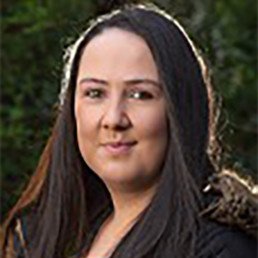
Written by Laura Morris
Laura Morris (@MissMorrisManc) is head of RS and Citizenship at a secondary school in Gorton, Manchester, with additional whole school responsibilities for SMSC and anti-discrimination. She has been teaching for 15 years. Her website is MissMorrisManc.co.uk.
Before the Black Lives Matter mobilisation of 2020, and all that followed, staff at the school I work at in Gorton, Manchester, would largely have felt positively about the work we were doing to celebrate our students, myself included. We went all out for Black History Month every year with relevant lessons across departments and external visitors invited in (as showcased in this video from October 2019), we had very few complaints of racist incidents from the students, and some work had been undertaken to decolonise the curriculum, particularly in subjects like RS, Citizenship, History and Geography. We could pat ourselves on the back for a job well done!
With all the work we’ve done since, and the huge changes that have been made, I now feel embarrassed to reflect back to pre-2020 when I thought we were already doing enough for our students. We weren’t.
Before we broke up for summer this year, I wrote a report detailing what we’ve done so far with the hope it could give ideas to other teachers and save them some time if they are starting from scratch. It’s been a process of trial and error and, while we’re still far from perfect and keen to collaborate with other schools to help us further improve, I am confident that we are now having a much more positive impact on our students in making them feel seen, appreciated, safe and loved.
In this blog I will summarise the most important parts from the report for people who are keen to improve the anti-racist practice in their school.
Named members of staff
Towards the end of the 2020-21 academic year, my colleague Ben Wilson was given a TLR to focus on anti-discrimination work in the academy and I was made associate assistant head with the same priority, which I realise puts us in a very fortunate position. Our head teacher included this anti-racist work as an objective in the school improvement plan and believed it was necessary to appoint people in posts to achieve our goals. I can’t stress enough how important it is for all schools to be willing to give time and money to staff doing this work and can only hope the example from our school will help other teachers feel confident to take similar proposals to their head teachers.
Staff groups
If I had to single out the most impactful elements of our process, it would be the staff and student groups. So many changes have been made but it’s hard to think of anything we’ve done that didn’t first come from conversations held in these spaces.
I realise how lucky I am to work alongside enough people who recognise the institutional racism present in education and were prepared to give up their time to do something about it, and that’s how the anti-racist working group (ARWG) was formed in September 2020.
We created sub-groups, each taking responsibility for a different area that we decided needed to improve, like the behaviour system and reporting incidents of discrimination, student voice, the curriculum, and staff CPD.
If you don’t feel as though you’ve got enough members of staff with the interest or time capacity to take on this work, there is no need to panic, as it is the students who have guided so much of what we’ve achieved. They are the experts and are invaluable to bringing about change.
Student voice
Student meetings started in early May 2020 during lockdown on Zoom with organisations like Kids of Colour (who still lead student meetings half-termly) and The Black Curriculum, and continued informally during lunch times when we returned to school the following academic year. It became clear how important it was for our young people to be given time to talk about their experiences of racism both in and outside of school.
At the start of the 2021-22 academic year we interviewed Year 11 students for anti-discrimination ambassador roles. They decide the agenda for the separate fortnightly KS3 and KS4 meetings, which are held during the 30-minute form time slot, lead the discussion, and, while I am in the room (to take back any pressing concerns to the ARWG), the ambassadors take responsibility for the meetings. Students discuss their personal experiences outside of school, what they believe needs to change in school, and anything that is going on in wider society that they would like to talk about. Any students who don’t feel comfortable reporting incidents of discrimination to teachers can go to the ambassadors who then feed back the details to Ben or me.
One of last year’s anti-discrimination student ambassadors said: “I feel like having this space for students is really important because we come together as a community to discuss issues that really matter to us and we think of ways to resolve it and deal with it.”
We have an annual anonymous anti-racist student survey, to help us identify issues that may be affecting students who don’t attend the meetings, and the student groups have delivered assemblies in response to the feedback to educate all students on discriminatory behaviour they might knowingly or unknowingly be perpetuating.
Towards the end of the 2020-21 academic year, Year 11 students wrote down examples of times that staff had said or done racially or culturally insensitive or offensive things. I recorded them reading out the statement of another student, to ensure anonymity, and played the video to staff during a CPD session.
Hearing the accounts woke up so many members of staff to the experience of the students, which has meant that all the work that has followed, that has resulted in an extra time commitment for pretty much everyone working in the academy, has been easier to achieve. There’s little room to question or complain about the need for change when you have student testimony to support the cause.
Discriminatory incidents
Discussion in the student groups highlighted the need for us to better deal with incidents of discrimination between students. Racism was very rarely reported but feedback from the student groups revealed this was down to the students feeling as though nothing would happen as a consequence, either because they had reported something in the past and hadn’t heard how or if it had been dealt with, or their belief that it wasn’t a priority for staff.
Ben created a reporting system (that you can read about in more detail in the report), which was trialled at the end of the 2020-21 academic year and put in place the following year, which has currently significantly increased the workload of staff who deal with behaviour incidents. But it has also meant we are in a much stronger position to educate and sanction students involved in discriminatory behaviour, as well as validate the feelings of, and bring resolution to, the victims. Different forms of microaggressions are the most commonly reported incident and students have responded incredibly well to the educational sessions they attend with Ben or me as a consequence. Victims are given the opportunity for a restorative conversation, once pre-restorative work has taken place with both students, and they almost always choose to take up this offer in the process.
The number of repeat offenders is minimal, if not close to non-existent. But the number of reported incidents has increased. Students now have the confidence in the school to respond appropriately to accusations of discrimination.
As one of last year’s ambassadors put it: “when I look back at when I was in Year 9, if someone said something racist to me I would just go home and cry. But now I would feel empowered enough to report it and I hope younger students feel that way too.”
Curriculum changes
All subject leaders completed The Key’s anti-racism curriculum review document, which identified areas for improvement for departments already on the journey of decolonising their curriculum and served as a fantastic starting point for teachers who didn’t know where to begin.
After being given department time to plan and create new resources, we’ve had a carousel format for whole school CPD sessions to share these across departments. Most departments now have a member of staff with an objective in their appraisal relating to diversifying their curriculum. During the carousel CPD we have a ‘speed dating’ format where staff spend a few minutes listening to the changes each department has made, and having discussions on the impact and any possible cross-curricular links, before moving on to the next department.
We recognised the need to better signpost these changes to students. Bennie Kara delivered a bespoke CPD session for our staff last December where she suggested posters to be placed around school. Now every classroom has a subject specific poster highlighting content relating to race (as well as sexuality, gender and religion) in our curriculums. Before breaking up for summer, subject specific PowerPoints were shown to all students too so they knew what to expect in the year ahead. Examples of what we teach can be found on our school website.
For more details on the processes above as well as other initiatives we’ve implemented, check out the report in full. Feel free to reach out to me on Twitter too!
Building a Multi-Faith Space

Written by Hollie Panther
DEI Lead, Mental Health First Aider, secondary Science & Psychology teacher and Teach First Ambassador.
Experiences of, and learnings from, establishing a space for prayer and celebration of religious diversity in a secondary school.
The last school I worked in had a majority non-religious student population, but a diverse spread of religions among those who did follow a faith; many religions had just one follower within the student body. A parent of one such student had mentioned that they were uncomfortable being open about their faith due to the amount of discrimination they’d received in the past. As D&I Lead, a large part of my strategy to improve religious inclusion in the school was to open a Multi-Faith Space. When I started, there was no designated place to pray; my previous school did have a prayer room, but it was hidden away and only students or staff who asked about it were encouraged to use it. I wanted to create a space that people from all religions could use, so that it would encourage some sense of community, which I thought those who were the solo followers of their faith within the school might’ve been lacking. I also wanted it to be a place of celebration and curiosity, so that any student could learn about diverse faiths if they wanted to. The space was initially opened as a work-in-progress during Ramadan, to give Muslim students a place to pray and be away from food if they needed it. During this time I also designated a toilet block for Wudu, the practice of washing before prayer, and delivered whole school talks educating students about Ramadan and how to support students who were fasting. Feedback from this was unsolicited and overwhelmingly positive — parents of Muslim pupils wrote in to the school to congratulate and give thanks for the ‘exemplary inclusion effort for Ramadan’; my wish is for this approach to Ramadan to become the norm in all schools, so all pupils can celebrate the diversity of religious practices alongside one another.
Working alongside the Multi-Faith Space was the Religion & Spirituality Society, which I established as a student-led club who met at lunchtime to explore and learn about various religions. The leaders of the society planned activities and presentations for the group, and brought in occasional themed snacks too — I’m hoping the society will meet in the Multi-Faith Space going forwards, to ensure they are surrounded by diverse religions, with the opportunity to learn about them being easily accessible.
The Multi-Faith Space is two small rooms off of the Library, where I have put up shelves on each wall and designated each of the six walls to a major world religion (Christianity, Islam, Judaism, Sikhism, Hinduism, Buddhism). I reached out to religious leaders in the community to see if they would be happy to donate a copy of their religion’s text or any artefacts that could go on the shelves. This took the form of finding email addresses of local Mosques, Churches, Gurdwaras etc, or filling in contact forms on their website, and Googling ‘free copy Jewish, Hindu, Buddhist etc text’, and making sure in my message I invited them to send my request on to anyone else they thought might be able to help out. As a result of this I had an incredible array of items gifted to the Multi-Faith Space by several local religious groups, and had an insightful and useful meeting with the representative of Judaism from the West Sussex SACRE (every county council have representatives of world religions, who are keen to come into schools to deliver lessons / assemblies etc on their religion, I’m hoping the next D&I Lead and teachers of RE will be able to make use of this otherwise untapped source after my introductions — none of the RE teachers in the school had heard of them). Several sources of items and books posted them to me or dropped them in to the school, but I also visited several organisations to collect their donations, which I really enjoyed, as it took me to places I wouldn’t have ordinarily visited within my local community.
I organised a Grand Opening for the Multi-Faith Space to which I invited all the local contributors, as well as staff and religious students. The student leader of Religion & Spirituality Society was invited to cut the ribbon; it was a great opportunity for me to connect up school staff and the pupils who will be running the Religion & Spirituality Society next year with community religious leaders (over donuts and cookies), so that they are able to lean on them for support with the society and also with RE teaching as the school grows. One community attendee at the Grand Opening came from the Baháʼís, a religion I admittedly hadn’t heard of when they initially made contact, but which I learnt much about through talking to this local follower at the event. They also donated several items and books to the Multi-Faith Space, and though they didn’t have a designated wall and shelves, I set up a table in the space to display their information, and was really glad to be representing a greater diversity of faiths than I had originally planned for.
I had a student volunteering with me for their Duke of Edinburgh’s Bronze award, who helped me plan the space and also worked in the Design Technology (DT) room on a signpost to go outside of the Multi-Faith Space, which featured laser-cut arrows, each one with a different place of worship on it — ‘Hindu Mandir’, ‘Sikh Gurdwara’ etc. Unfortunately, because the student could only work on this under supervision by the DT teacher, due to technology issues and absence, the sign was not finished in time for the Grand Opening — I look forward to seeing photos of it in pride of place when it’s completed in the Autumn term.
My advice to anyone thinking about building such a space would be to absolutely go for it — the only spend was on the shelves and snacks for the Grand Opening, as well a couple of items to represent religions who didn’t get back to me to contribute anything. The rest was furniture that was already in the school, and the items and books gifted by the religious community were invaluable — so it’s doable on a tiny budget, I would just encourage anyone wanting to build one to start early, and get your message with the call for help / donations really clear and send it to as many people as possible, ideally alongside an invite to a Grand Opening — and then chase them up if they haven’t replied; I got the impression that everyone wanted to help, but that sometimes there are multiple people within a place of worship who read the emails, so they may not get picked up the first time around.
On the whole, I really enjoyed building the Multi-Faith Space and I’m really proud of what I achieved with this — the Grand Opening was on my penultimate day working at the school, so it really feels like a legacy I’m leaving behind; a tangible asset to the school community that will continue my work without me.
Representation, Challenges and the Importance of DEI in Schools
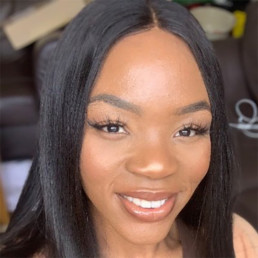
Written by Taiwo Bali
Taiwo Bali writes education updates, teaching tips and well-being related content for secondary school teachers.
From receiving hate mail to leading a booming community that celebrates all people, Hannah Wilson has shown her commitment to DEI. She sat down with Beyond Digest to share why she believes DEI is essential in all schools.
Hannah Wilson is a leadership development coach and trainer with a passion for Diversity, Equity and Inclusion (DEI) in education. She is the Co-founder of #DiverseEd, an organisation dedicated to tackling issues faced by underrepresented communities and furthering DEI in schools.
Her former roles as a Secondary English Teacher, Head of Secondary Teacher Training and Founding Executive Headteacher allowed her to develop rich expertise in education. Hannah kindly spoke to Beyond Digest about her journey with DEI and the importance of diversity in schools.
Q: What sparked your passion for diversity and inclusion?
H: As a student doing GCSE English I was indignant about the lack of diversity in the curriculum. It just never sat right with me. I was exposed to postcolonial literature at university and learned about topics such as diversity in social justice during apartheid and the caste system in India. It was really interesting for me to look at literature in that way and also the critical theory around it. So when I trained to be an English teacher, I guess I just brought that into my teaching and into my curriculum design because I worked in quite challenging schools. I worked in a boys’ school in Kingston, I moved to an academy in Mitcham and then an academy in Croydon. I’ve taught really diverse students and I think when I’m looking to see whether they see themselves in the displays and in the library, in the curriculum, you can see the disengagement because they can’t.
Q: What has being a DEI ally taught you?
H: As I’ve been promoted, I’ve thought about what I can do in my roles as a curriculum leader, pastoral leader and headteacher to help affect change. When I co-founded #WomenEd we had lots of conversations about gender representation, but quite quickly, the feedback from the network was that it felt like it was white feminism as opposed to true feminism because it was a group of white women predominantly talking about it. At events, I put myself in a room with all black teachers, talking about their experience of education and headship. At that moment my bubble got popped and my own privilege got checked. Even as someone who felt quite aware of some of those issues, I discovered a whole trench load of information that I didn’t know. That’s when the need to diversify the organisation became the top priority.
Q: As someone who ran a school, why do you think it’s important to have a diverse SLT?
H: I have worked in six different schools and the SLT and governing bodies never represented the children. When I left London and then moved up to Oxford to be a headteacher, I recruited a very diverse team because I care about diversity. I recruited a diverse SLT because I knew it was going to be part of our school culture, policy and practice. Diversity needs to be humanised so by having a visibly Muslim member of SLT who did assemblies about Ramadan and spoke to the children about his faith, he demystified and de-stigmatised what it meant to be Muslim. He educated the children and their parents on his faith. We also had openly gay and bisexual members of staff which supported young people who were exploring their own sexual orientation and allowed parents and carers in same-sex relationships to feel accepted. Visible representation and role modelling made the children, parents and fellow staff feel safe.
Q: How important is it for young people to see diverse staff?
H: I worked in schools with 55% black boys and there were no black men on the governing body. For me, there needs to be that mirror, there needs to be a reflection of the children we are teaching and the communities we are serving. Young people need to be able to see themselves in the staffing, leadership and governance. There’s great irony in a young person walking through their school and not seeing themselves. I have done talks at heads conferences where quite often, people think their school is more diverse than it is. You may have diverse adults in the building but what job are they doing? Are staff from underrepresented groups in positions of power and can they influence decision making? What messages are the children receiving about their future prospects and opportunities to succeed? We tell young people they can be anything they want but we implicitly cap their potential by not being intentional about who is appointed into which role. We can’t say one thing in assembly and then on staff recruitment day, do something completely different. Young people have got to see it to be it.
Q: What challenges have you faced in championing DEI?
H: After moving to Oxford, I think my team and I were all a little bit shocked that the DEI work we were doing in schools in London, Reading and other parts of the country felt really alien in this part of the world. I got quite a lot of pushback because they weren’t quite ready for it. The challenge came from the people in the wider community. We had parents and carers who chose not to send their kids to our school because they didn’t want their kids to go to a school where there were LGBTQIA+ posters in every classroom. I had parents say to me, your school is beautiful, I love your vision for education, take those posters down and I’ll send my kids to your school. It didn’t sit right with us so we kept them up. This was part of our school culture and ethos. We were committed to creating psychological safety and a sense of belonging for all children. It all kicked off when one complaint from a parent ended up in the local media and the story went from regional to national. There were nasty comments from a popular newspaper’s readers and 3000 comments in a local Facebook group and I even received 86 letters threatening my life. DEI brings the worst out of people sometimes.
Q: How did the negative press impact the DEI work you do?
H: People get loud, defensive or just spew hate because they think their actions will stop you. If anything it made us even more committed to the work because it showed the ignorance and lack of empathy in some people. I do a lot of work talking about values and ethics and for me, remaining committed to DEI is ethically the right thing to do. My values drive this work. Though advised not to, I wrote a blog post to address the negative press because I didn’t want to be silenced as a woman. I didn’t want to be silenced as a school because we were committed to this work. The blog went viral. I think we had about 14,500 thousand hits and I got a lot of disclosures from other heads and school leaders around the country who had been in a similar situation and were happy I spoke out.
Q: Where can schools get DEI training?
H: After the death of George Floyd schools needed to do something about DEI but didn’t know how to get started. Everyone in my network was looking for training. DEI is very overwhelming because it touches every single policy and practice. You don’t know what you’ll find out about your school until you start looking. It is a difficult and emotionally draining journey to go on and schools need support. The #DiverseEd website is a one-stop-shop for all aspects of DEI training. We use the directory to signpost specialists so if schools need anti-racism, menopause awareness or gender identity training they can find the best trainers. #DiverseEd now works with 185 organisations that are tackling DEI all over the world. We also offer toolkits and reading lists based on different aspects of DEI for schools to use.
The #DiverseEd community continues to grow. Last year they held its first virtual event (June 2020) which had a reach of 13,500 people from around the world, who joined for 5 hours on a Saturday morning to listen to all things DEI. The next free event will be held virtually on the 22nd of January 2022. Find out more here.
Hannah and her friend Angie Browne have also joined forces to create a programme to help schools navigate DEI. Both former headteachers use their expertise in headship to offer paid leadership training courses in governance training, SLT training and diversity masterclasses. The training covers topics ranging from inclusive language to curriculum development and now has 20 cohorts of leaders, which is a testament to the value they offer.
DEI should be an integral part of every school. Having a safe learning environment that celebrates diversity and raises aspirations is something all young people deserve. How does your school tackle DEI? Share your thoughts with me via Twitter.
Find Hannah @Ethical_Leader and #DiverseEd on Twitter and #DiverseEd via the website.
Education DEI Calendar 2022-23

Written by DiverseEd
Diverse Educators started as a grassroots network in 2018 to create a space for a coherent and cohesive conversation about DEI. We have evolved into a training provider and event organiser for all things DEI.
We know that it is really hard to keep on top of all of the awareness and celebration days, weeks and months to include in the school calendar!
We also appreciate that it is equally difficult to know when to schedule/ host a DEI event without causing an unintentional clash or how to find out what DEI events are happening.
So we are proposing a work-in-progress solution which will evolve and grow as others contribute to it to co-create a comprehensive resource to make all of our lives a little bit easier…
The Education DEI Calendar 2022-23 is a draft – it is not perfect, it is not complete and it is in no way trying to exclude any key dates! Please bear that in mind as you review it and share solutions instead of problems if there are things you would like to suggest we add/ change as it evolves.
At the moment it captures lots, but not yet all, of the key dates from the following free resources which we signpost to people in our network:
- The CIPD Inclusion Calendar 2022
- The Dual Frequency Diversity, Equality and Inclusion Calendar 2022
- The Inclusive Employers’ Diversity and Inclusion Calendar
- The James Wants to Know You Diversity Calendar
- The NAHT Equality, Diversity and Inclusion Calendar 2022
- The NHS Diversity, Equality and Inclusion Events Calendar 2022
We have collapsed lots of these dates into a spreadsheet to make it more educator-friendly – so that you can filter by month, week, day and date to see what is going on. (You could also copy and paste it alongside your school calendar or your school’s assemblies schedule to cross-reference where themes are being explored).
We have not yet added all of the religious and cultural days as this will probably need another column as there are so many dates to be aware of. This will be the next layer of detail so keep checking back as it evolves over the summer break ready for the new academic year and start of term.
Note that when there is more than one theme on any given day/ week/ month we have sorted them by A-Z so that there is no perceived hierarchy. Also that when an awareness week is split across two weeks we have shifted it to the week it falls in the most.
Remember that you always have creative license to make these dates work for you, your school and your community – for example, some themes might need an awareness assembly before it falls on the calendar, others may require a celebration event following a key date. Consider how to streamline how many of the dates you want to mark so that it does not create overwhelm for staff nor students.
We have highlighted the weekends for all of the grassroot networks who host DEI events – the idea is that organisations in our network will be able to edit/ add dates of events with contact details and links to register/ book a ticket.
Do help us grow and improve the Education DEI Calendar 2022-23 by making suggestions and giving us feedback here. We hope you find draft 1 helpful to get you started!
DEI in an International Setting
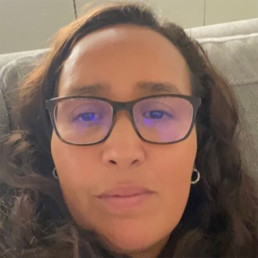
Written by Esther Mustamu-Daniels
Esther Mustamu-Daniels has 20 years of teaching experience working in London and the Middle East as a Class teacher, Education officer, Middle Leader and DEI Lead. Currently working at British School Muscat, Esther co-leads the DEI work across the whole school.
Many international schools are on or starting their journey of awareness of diversity, equity and inclusion. Because cohorts in these schools are so diverse by nature, often staff feel that there are no problems and that racism/discrimination is not a factor in the schools. This is usually very far from the truth.
Be brave; be vulnerable and start the challenging and honest conversations that are needed for change to take place.
Because of recent high profile events, diversity, equity and inclusion is a necessary space in all educational settings and that international schools, who send their alumni to universities all over the world, would do well to support, inform and equip students with knowledge and language to engage with the different topics around DEI.
How do schools start tackling, delivering and addressing these needs?
Start with the staff: build open conversations. It is important to know that not everyone is at the same place on their journey and also that there are different opinions. Gathering the ‘tone’ of your school as well as allowing safe spaces to share experiences is a key factor. What is important is that this is not only talk; action is also needed. This is an emotional and difficult journey so be sure to provide space and time to reflect and learn.
Action: Build a plan of how you will move forward. You may need to conduct a survey or gather some research and data from your school’s stakeholders to help you focus on what the priorities are in your specific setting. Are there specific needs or policies that need addressing first? This will help to focus on each step and also assign roles or tasks to specific people. This should be flexible so that it can be adapted along the way.
Leadership: Is there someone leading the work? Do SLT support and value the work being done? Does your leadership understand the why and how? This is important because without this it is extremely difficult to implement significant change. Leadership needs to take accountability for the work being done in their school. Is that person being paid?
Support: This is also an essential element. Who is supporting the people completing the work? Are they being emotionally supported as well as practically? The people leading or sharing this work may have been personally impacted or triggered by the issues raised; how are they being supported?
What is important to note is that action in any form is good and a positive step in the right direction. Addressing and tackling these issues will take time and for long lasting impact will need to be embedded in the culture of your school or environment. This is not a badge or a t-shirt; this is a cultural shift of readdressing mindsets.
If you are involved or starting up; learn, speak and support. Being an ally and everyone doing their part is imperative. There is so much work being done at the moment. Twitter is an excellent source of examples, webinars and organisations that can support you on your journey.
Review of Diverse Educators: A Manifesto, ed Hannah Wilson and Bennie Kara (University of Buckingham Press, 2022)
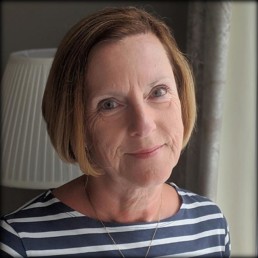
Written by Dr Jill Berry
Thirty years teaching across six different schools in the UK, state and independent, and was a head for the last ten. Has since completed a doctorate and written a book.
This book is a collaborative tour de force. Rarely have I read anything which has made me think as much as this book has. Tapping into the experiences of a wide range of writers whose lives have been, in so many ways, quite different from my own, has been sobering, humbling but ultimately energising. This book deserves to be widely read, robustly discussed and, crucially, its key messages need to be acted upon so that we work to change our world for the better – for everyone.
I appreciate that this is not necessarily a book most people would read from cover to cover. It is a weighty tome! It devotes one section to each of the nine protected characteristics, adds a chapter on intersectionality, a prologue and an epilogue. It is an amazing accomplishment, bringing together the views of 125 contributors, including the ten chapter editors, and Hannah and Bennie, who all share their stories and their perspectives. The book goes far beyond the exploration of personal stories, however.
I imagine that many people would identify a specific section, or several sections, about which they wished to develop their knowledge and understanding, and would focus on that part of the book. But I want to advocate for reading it all. Even if you feel that there are certain characteristics that you believe you fully understand and appreciate – perhaps you share them – I suggest that every section has something to teach us. And as you make your way through each separate section, you appreciate the connections, the echoes and the common ground, reinforcing the essential humanity which underpins this story of ‘difference’. As Bennie says in our Myatt & Co interview about the book: ‘No-one is just one thing.’
The range of contributors is one of the reasons this book resonates. Different contributors ranging from teenagers to the considerably more mature contingent; UK and overseas perspectives; primary, secondary and FE educators; state and independent sector teachers and leaders; many who share a number of protected characteristics offer their experiences, views and their own learning with generosity, honesty and courage.
Many of the stories are strongly grounded in research, and the book contains a great number of references, on which the contributors draw and which they share for those who wish to explore further through additional reading. It is also eminently practical, with key takeaways, key questions and specific commitments at the end of each chapter and a final section in which Bennie and Hannah make clear how readers can act on their reflections as they have worked through the different sections and what they have learnt as a result. They exhort us to consider: what difference will this make? It made me think of Zoe and Mark Enser’s words in ‘The CPD Curriculum’: “CPD does not happen through a particular input of information; CPD occurs through what happens next.” When you get to the end of the book, you are strongly encouraged to think about what action you will take as a result of the experience.
I strongly recommend ‘Diverse Educators: A Manifesto’. Bennie Kara’s words in the epilogue mirrored perfectly my own response to the book: “Throughout the book, I have been struck by the honesty of the contributing authors… I have seen in the writing parts of myself – feelings, thoughts and experiences that have served to demonstrate how we as education professionals have complex and interweaving experiences…In reading these chapters, even if I do not share a particular person’s protected characteristic, I have recognised the intensely human need to be heard.”
I would encourage you to make the time to read the whole book. I am confident that you won’t regret it.
We (Still) Need to Talk About Gender
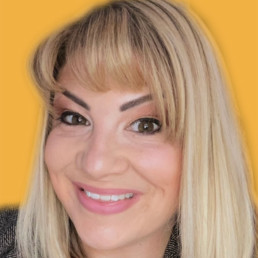
Written by Tracey Leese
Tracey Leese is an assistant headteacher, literacy specialist, parent governor and advocate for women in leadership. Tracey lives in Staffordshire with her two sons and fellow-teacher husband.
I am well aware that the land of gendered identities is an area in which attitudes and assumptions are rapidly changing… and that we are collectively beginning to see gender as more of a spectrum than a fixed binary position. But in our continued efforts to renegotiate our shared understanding of what constitutes gender or identity we can’t assume that female teachers are no longer subject to prejudice.
Women are not underrepresented in teaching – in fact it’s a female-centric profession, but we are underrepresented at every single level of educational leadership – most prevalently at Secondary Headship level. In comparison to some other protected characteristics the issue of gender seems so straight forward. I can see why some people might feel that it’s time to put the issue of gender to the bottom of the priority list.
Similarly, it’s easy to underestimate the myriad reasons why women still earn and lead less in what is supposed to be a truly equal and ethical profession. The motherhood penalty, work/ life balance and women’s desire to work flexibly are all seemingly widely-held reasons for this. Together with my brother Christopher, I recently co-authored Teach Like a Queen: Lessons in Leadership from Great Contemporary Women as an attempt to contribute to the ongoing conversation around diversity within school leadership. Throughout our research for the book we interviewed countless power women and were surprised when recurring themes of self-doubt, imposter syndrome and fear of disapproval emerged. In some instances, these female leaders cited seemingly “small” issues such as wishing to attend their child’s school nativity as reasons why leadership seems unattractive to women.
So, whilst we need to look at who is shaping policy and practice in education, we also need to be bold enough to imagine a future where more schools are ran by women and paid the same as their male counterparts. According to data from NAHT’s Closing the Gender Gap published December 2021, by the age of 60 male headteachers earn £17,334 more than female headteachers.
Our book was inspired (and supported by) the work of #WomenEd who are relentless in their work towards inspiring, empowering and supporting more women into leadership posts, the data tells us that in spite of the brilliant work already underway, that there is still so much work to do. So we absolutely cannot assume that the issue of gender is anywhere near resolved nor that the profession is as equitable as we’d hope.
We are all charged with addressing injustice in education – as leaders, as teachers and as stakeholders. The disproportionate representation of women in leadership and the gender pay gap absolutely amounts to injustice. Our students deserve to attend schools which are led by visionary and diverse leaders. So if a world without gender inequality is an unrealistic destination, I am just happy to be part of the journey.
Teach Like a Queen is out 30th May and published by Routledge: www.routledge.pub/Teach-Like-a-Queen
Be A Light In The Spaces You Occupy
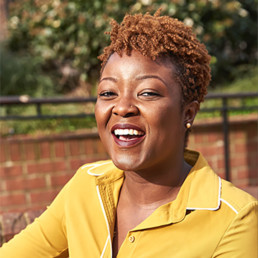
Written by Ayo Awotona
Ayo Awotona specializes in confidence building for girls in education. She does this through programs, workshops, and keynote speeches.
One of the great aspects of being a servant leader is being a light. It might sound strange but essentially it means having the ability to step into workplaces (physically or virtually) and speak hope, truth, and wisdom. It’s having the ability to help teams see situations with a new perspective and encourage them to have a can-do attitude.
Light is associated with visibility and helps to see things thoroughly, and servant leaders can provide that type of light. We can see things that others may not, such as highlighting why certain areas are not functioning well and cultivating a plan to tackle the problem.
How Can We Be Lights?
There are many ways we can be a light in our working environment and below I share four ways:
- Be perceptive/observant – This ultimately means being able to see deeper than what is on the surface; finding what systems are working or not and why, seeing how to implement new changes and reinforce what is already working well, etc.
- Be strategic – This definitely takes teamwork to brainstorm and create effective strategies to help run programmes, projects, or systems more smoothly.
- Spread hope – We can bring reassurance to others and brighten up the atmosphere by simply being hopeful and positive, reminding them of the vision and goal of the organisation/school.
- Embracing our individuality – Before being servant leaders, we are human with our own character traits and personalities. We can become more relatable and connect better with our colleagues/others because we come as ourselves.
What’s The Significance of Being A Light?
You might be wondering why it’s so important to be a light? Well, to give an illustration, we know there’s a stark contrast between darkness and light.
Imagine living in a house that is dimly lit for a whole week, and when the lights get fixed, everything becomes so much brighter and clearer. Similarly, we can be a light in dimly lit situations and see things through a new lens to help make what was ambiguous clear.
Many of us have experienced other people being lights in our world, maybe our mums, a friend, a mentor, etc. They brought hope, warmth, or made things visible that were not clear to us.
In Conclusion
In one way or another, all of us have the capability of being a light in each others’ lives. Specifically, in a working setting, servant leaders can be a light to spread hope, encourage change where necessary and bring new perspectives to improve overall work efficiency and efficacy.

